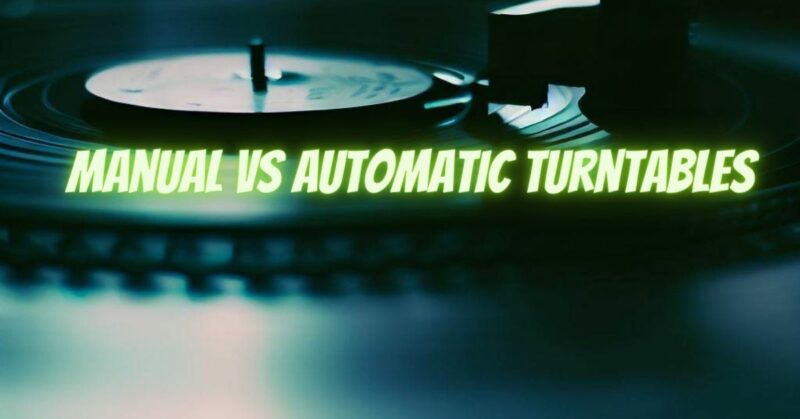Vinyl records have made a remarkable comeback, captivating music lovers with their warm sound and tactile experience. When choosing a turntable, one of the key considerations is whether to opt for a manual or automatic model. Each type offers distinct features and user experiences that can impact convenience and engagement with the vinyl playback process. In this article, we dive into the mechanics of turntables, comparing manual and automatic systems to help you find the perfect match for your vinyl journey.
- Manual Turntables: Hands-On Engagement
Manual turntables require active involvement from the user throughout the playback process. To play a record, the user manually lifts the tonearm, positions it onto the vinyl’s lead-in groove, and gently lowers it onto the desired track. At the end of the playback, the user manually lifts the tonearm and returns it to its resting position.
The key advantage of manual turntables lies in the hands-on engagement and connection with the vinyl playback experience. Operating a manual turntable involves a level of physical interaction and ritualistic involvement that can enhance the overall enjoyment and appreciation of vinyl records. It allows for precise control over the placement of the stylus, ensuring accurate tracking and reducing the risk of accidental scratches or damage.
Manual turntables are also highly customizable, as they often allow for upgrades and modifications to various components such as the cartridge, stylus, and tonearm. This flexibility allows users to tailor the turntable’s performance to their specific preferences and budget.
- Automatic Turntables: Convenience and Automation
Automatic turntables, as the name suggests, offer automation and convenience in the playback process. These turntables feature mechanisms that automatically lift and position the tonearm onto the vinyl record, eliminating the need for manual intervention. At the end of the playback, the tonearm automatically lifts and returns to its resting position.
The primary advantage of automatic turntables is convenience. They provide a hassle-free and user-friendly experience, especially for individuals who prefer a more straightforward approach to vinyl playback. Automatic turntables are ideal for those who value convenience, multitasking, or have limited physical dexterity.
Additionally, automatic turntables often feature features such as automatic start and stop, repeat play, and sometimes even the ability to skip tracks at the push of a button. These features can enhance the overall ease of use and user experience, particularly for individuals who enjoy background listening or frequently switch between tracks.
Conclusion:
Choosing between a manual and automatic turntable depends on personal preferences, desired level of engagement, and convenience factors. Manual turntables offer a hands-on and immersive experience, allowing for precise control and customization options. They are well-suited for individuals who appreciate the ritualistic nature of vinyl playback and desire a deeper connection with their music.
Automatic turntables prioritize convenience and automation, providing a user-friendly and hassle-free experience. They are suitable for individuals seeking a more straightforward approach to vinyl playback or those with limited physical dexterity. Automatic turntables excel in situations where convenience and multitasking are valued, such as background listening or frequent track switching.
Ultimately, both manual and automatic turntables have their merits and cater to different preferences and usage scenarios. By understanding the mechanics and characteristics of each type, you can choose the turntable that aligns with your desired level of engagement, convenience, and the overall vinyl listening experience you wish to achieve.


